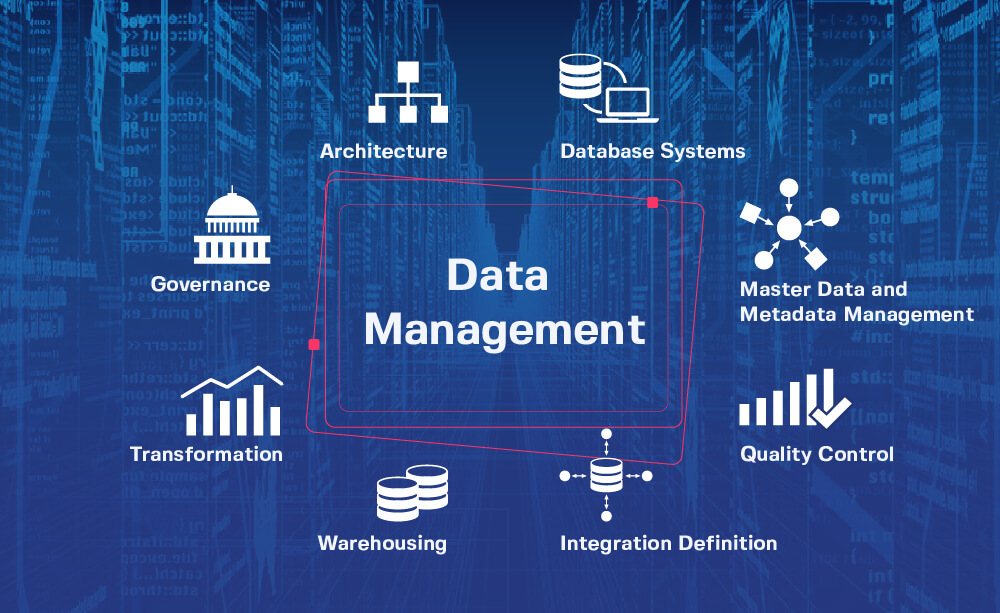Data Management

Assess the current status of the data
• Identify all available data sources in the organization such as databases, electronic files, papers.
• Classify data based on its types (customer data, financial data, operational data) and their importance.
• Identify relationships between different data sets – merge shared data.
• Measure data accuracy – Does the data accurately reflect reality?
• Evaluate data completeness – Are all necessary fields in records completed?
• Review data consistency – Is the data consistent across different systems?
• Detect and address duplicate or inaccurate data.
• Evaluate data collection tools – such as input forms, measurement tools. Review data storage systems – databases,
Cloud storage. Verify the systems’ ability to accommodate current and future data.
Application of data protection technologies
• Implement advanced security protocols such as encryption, firewalls, and intrusion detection systems (IDS).
• Develop policies to control access to data, including Multi-Factor Authentication
• Conduct periodic penetration tests to assess the strength of security defenses
• Ensure compliance with laws and regulations such as CCPA or GDPR, and develop policies that respect individuals’ rights to access, correct, or delete their data. Conduct Privacy Impact Assessments to identify and address potential privacy risks.
Data Policy Development
• Define short- and long-term data management goals – such as increasing access to data, improving reporting quality.
• Consider legal and regulatory objectives (such as compliance with data protection regulations).
• Develop data collection policies, including required consents and data collection methods. Define storage policies, such as retention periods and types of data that must be encrypted. Develop data access policies
Who can access what types of data and under what circumstances? Design internal and external data sharing policies, including how data is shared with external partners
Improving data quality
• Establish data quality standards – such as rules for formatting and allowable errors.
• Develop policies for regularly updating data and ensuring it reflects the latest information.
• Design periodic data cleaning processes that include removing duplicate data, correcting incorrect data, and completing missing data.
Use techniques such as machine learning to detect and analyze common errors in data.
Data management structure design
• Define core roles such as chief data officer (CDO) and data custodians.
• Data analysts Create teams dedicated to managing specific aspects of data – such as quality, security, compliance.
• Develop reporting and communication plans across teams to ensure smooth collaboration.
• Assign data custodians to each type of data to ensure that all policies and procedures are properly applied.
• Define data custodian responsibilities such as monitoring data quality, ensuring policy compliance, and overseeing data access.
Facilitate access to data
• Facilitate searching and accessing metadata Develop a metadata management system.
• Organize data in a way that makes it easy for users to identify and understand the context of the data.
• Provide analytical platforms such as Big Data analytics, or Power Tableau, to easily analyze data.
• Train teams to use these tools effectively to make data-driven decisions.
Data Lifecycle Management
• Develop storage strategies such as identifying the types of data that require On-Premises storage or cloud storage.
• Implement periodic backup systems to ensure data is protected from loss.
Developing data sustainability strategies
• Develop Business Continuity Plans including disaster recovery strategies.
• Implement regular backup and disaster recovery procedures.
• Periodically review policies and procedures to ensure they are improved and updated in line with technical and regulatory changes.
• Use feedback from different teams to improve data management processes.
Compliance Monitoring and Quality Assurance
• Conduct internal and external audits to ensure that data management practices are in line with established policies and standards.
• Develop tools and indicators to measure data quality on a regular basis.
• Develop clear policies that specify the length of time data should be retained based on its type and sensitivity.
Design secure procedures for destroying data after it expires (e.g. encryption and physical destruction of media).
• Continuous monitoring to ensure compliance with data-related regulations and update policies according to legal changes. Establish dedicated teams to monitor compliance and provide periodic reports to management.
Training and development of employees in data management
• Providing training. Organizing specialized training courses covering topics such as cybersecurity, data analysis, and data governance.
• Targeted to each department according to its needs – such as training marketing teams to use customer data effectively.
• Providing advanced training programs to develop technical and administrative skills related to data management. Encouraging participation
in conferences and seminars related to data management to keep up with the latest trends and technologies.
